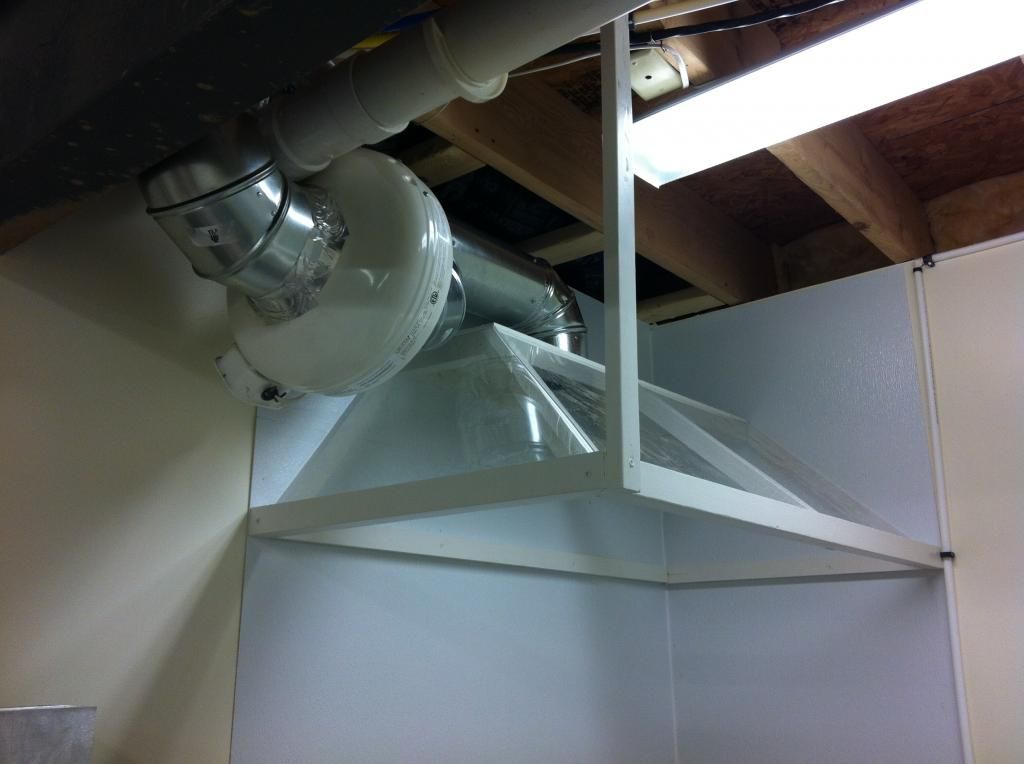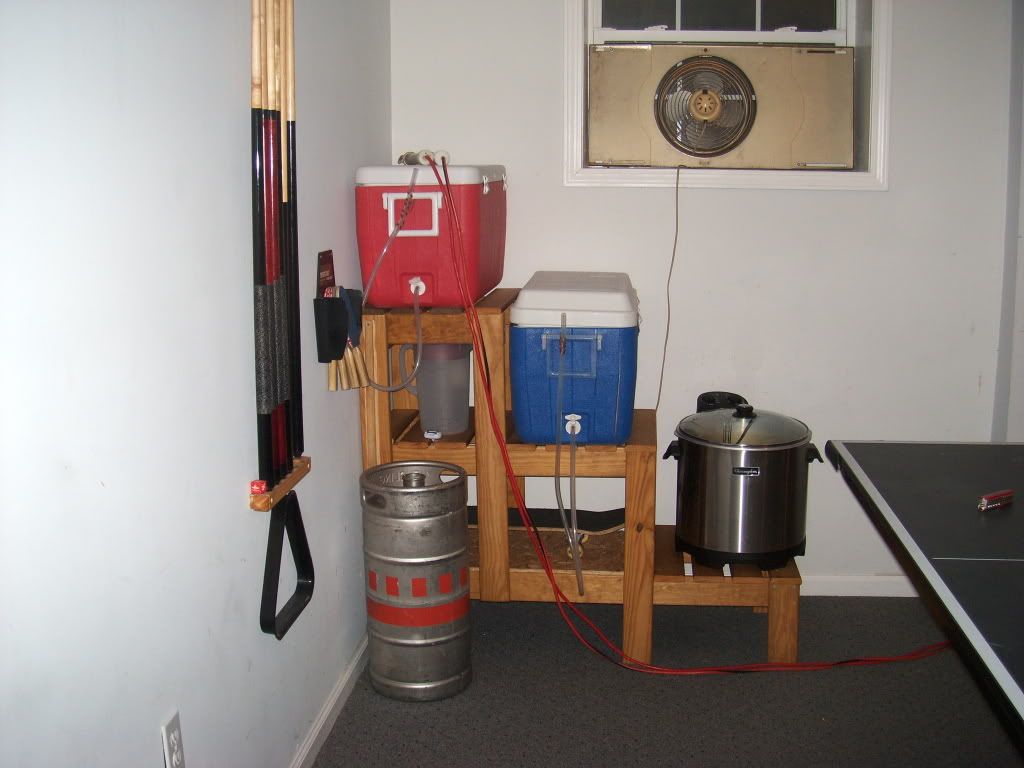Oh and don't forget to determine if you need makeup air with your ventilation system. This whole process was a little daunting at first but after a little reading I stumbled upon this webpage that has a worksheet you fill in values to and determine if makeup air is needed. It is for Minnesota (and I'm in PA) but I'm sure it's good enough. Just use the worksheet that fits your homes age.
http://www.structuretech1.com/2013/10/how-to-determine-if-makeup-air-is-required/
For my scenario, the 440 cfm potential fan requires an 8" passive opening which will be solved by opening a window in the basement during brewing.
The whole point to this is that you don't want to backdraft any devices (sucking CO/CO2 emissions from the hot water heater or furnace) that may be using combustion air from the basement as opposed to having a dedicated air intake pipe that runs from the outside to the device directly.
If you have a high efficiency furnace then you most likely gave a dedicated air intake vent for it from outside like I do. Your hot water heater though will either be power vented or have a vent that above it, if gas, and that's a concern for back drafting





